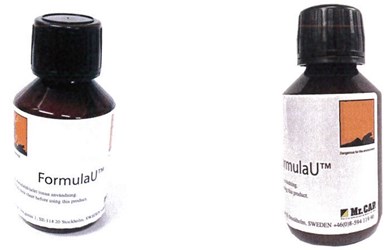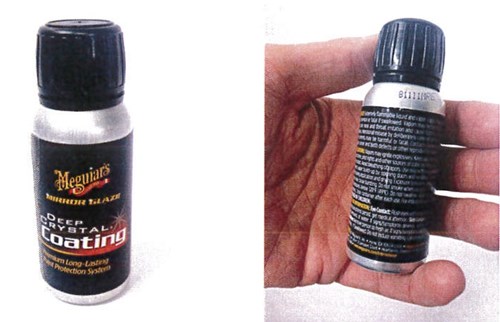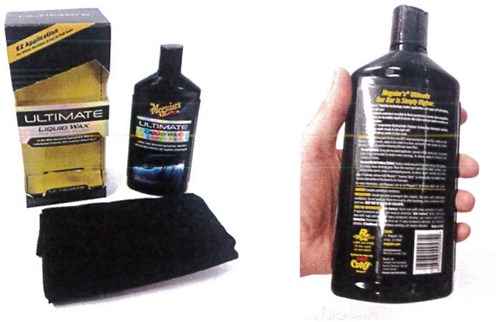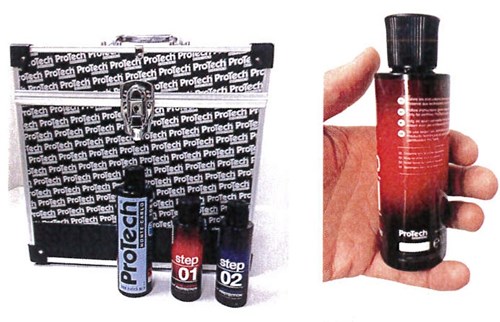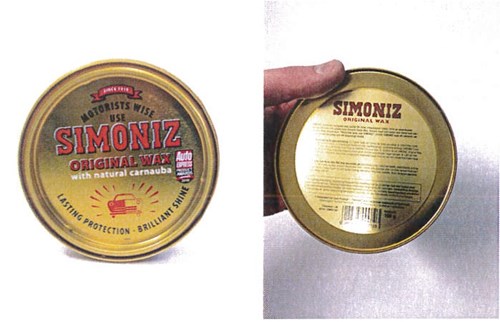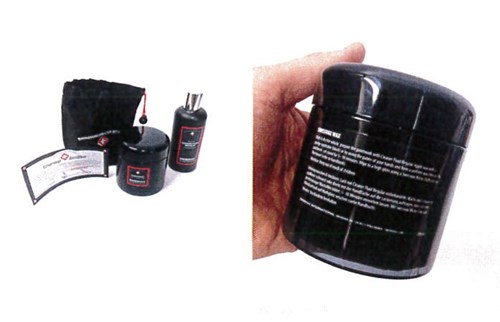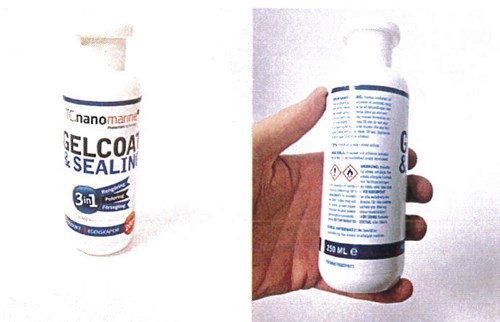MrCAP UTKLASSAR KONKURRENTERNA
Hur bra är egentligen en lackytbehandling? Håller produkterna vad de lovar, dvs finns skyddet verkligen kvar på lacken när man har tvättat bilen ett antal gånger? MrCAP har massor av nöjda kunder och våra egna tester har visat på att vår produkt FormulaU™, som vi själva har utvecklat, fungerar utmärkt. Vi bestämde oss ändå för att låta en oberoende part testa vår egen produkt och några av de mest kända, konkurrerande produkterna.
Testet som omfattande totalt 891st mätningar, visade att 10 konkurrentprodukter hade försvunnit från ytan redan efter en tvättcykel. Vi blev själva överraskade att FormulaU™ håller längre än vad testet var konstruerat för.
Vid testets avslutande (efter 14 tvättcykler, motsvarande 182 manuella biltvättar) är FormulaU™ fortfarande aktivt!
FormulaU™ från MrCAP – DET MEST HÅLLBARA SKYDDET
I marknadsföring försöker alla företag framstå som att man har de bästa produkterna. Men alla kan ju inte vara bäst. Oftast är några produkter bra och andra mindre bra. Det kan därför vara svårt för en konsument att veta vad som egentligen gäller. Man vill helt enkelt veta vilket som verkligen är det bästa köpet. Vår egen erfarenhet har visat att vår FormulaU™ förmodligen är det bästa skyddet för en bils lackering. Våra långtidstester har visat att FormulaU™ håller toppklass och hävdar sig mycket väl mot andra produkter.
Men för att få veta säkert beslutade vi att låta ett oberoende laboratorium göra ett test av vår egen och konkurrerande tillverkares produkter. Vi vände oss till bästa tänkbara institution, nämligen Statens Provningsanstalt (SP – se faktaruta) för att få frågan avgjord i ett objektivt och vetenskapligt test.
Uppdraget till SP blev att jämföra vår produkt MrCAP FormulaU™ Car Paint Protection och vår motsvarande produkt för den marina marknaden MrCAP FormulaU™ Marine Gelcoat Protection, med 13 andra, välkända konkurrerande produkter.
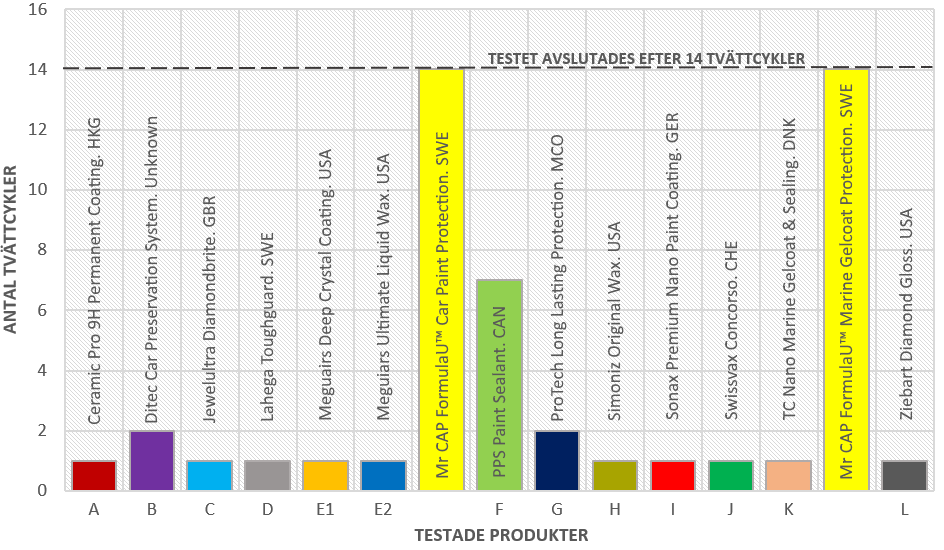

Vi gav dem i uppdrag att under kontrollerade former göra ett vetenskapligt jämförande laboratorietest, så nära verkligheten som möjligt. Syftet var att undersöka vilken av produkterna som hade bäst hållbarhet mot det slitage som uppstår när bilen används och tvättas på ett normalt sätt. Dvs vilken produkt som ger det bästa skyddet över tiden.
Graferna visar att produkterna från MrCAP klarade slitaget överlägset bäst. Bara en konkurrentprodukt var någorlunda jämförbar. Graferna från testet visar kontaktvinkeln (se faktaruta nästa sida) mätt i olika steg; först mätning innan applicering av lackskydd, sen mätning efter applicering och härdning, och därefter mätning efter varje tvättcykel, 1, 2, 3 osv. Stapeldiagrammet visar tydligt hur länge skyddet från varje produkt fanns kvar på lack/gelcoatytan. Båda FormulaU™-produkter från MrCAP, fick toppresultat. Med ett undantag visade konkurrerande produkter på mycket låg förmåga att skydda ytorna över tiden.
SÅ HÄR GJORDES TESTET:
Inför testet lackerades ett antal likadana metallplåtar med en ordinarie, industriell billack av samma typ som används i bilindustrin (lika på alla). Dessutom framställdes glasfiberpaneler med röd gelcoat, för att parallellt testa de marina produkterna.
I laboratoriet applicerades sedan de lackskyddsprodukter som ingick i testet, på plåtar respektive glasfiberpaneler. Allt enligt varje tillverkares instruktioner. Före varje tvättcykel utsattes plåtarna och gelcoatpanelerna för behandling med två olika typer av avfettning.
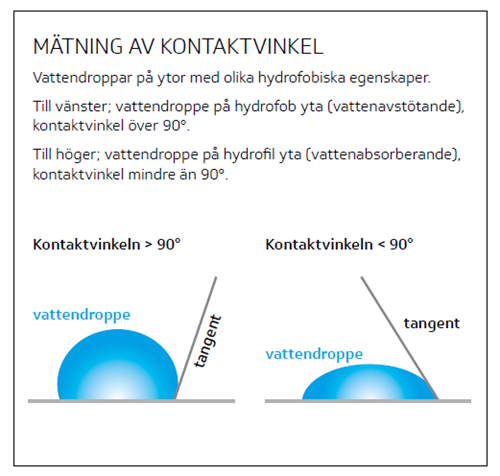
I det avgörande testmomentet fick en slitagemaskin, utrustad med två tvättsvampar, parallellt monterade och kontinuerligt fuktade med ett ordinarie bilschampo, svepa över ytan under konstant tryck. I varje tvättcykel fördes svampen 20 gånger fram och tillbaka, dvs 40 gånger, över panelerna.
Av erfarenhet visste man att svampen förs över varje del av lacken i genomsnitt 3 gånger vid en normal, manuell biltvätt. En tvättcykel i laboratorietestet skulle då motsvara ca 13 manuella biltvättar. (En personbil tvättas i genomsnitt 18 ggr per år.)
Efter varje tvättcykel droppades exakt 3 ml vatten med en laboratoriepipett, på ytan som testades. Med ett mikroskop mättes och registrerades sedan kontaktvinkeln (se faktaruta) mot lackytan. Det upprepades tills mätningen visade att den aktuella lackskyddsprodukten hade försvunnit från ytan. Dvs när mätvärdet var tillbaka på samma nivå som innan appliceringen av resp lackskyddsprodukt. På så sätt kunde man följa hur varje tvättcykel påverkade respektive lackskydds hållbarhet.

Så här var testet upplagt i ett antal steg. Initial mätning på enbart lackerad plåt, därefter mätning på lackyta behandlad med lackskyddsmedel som fått härda och sedan mätning efter varje tvättcykel. Redan efter två tvättcykler i laboratoriets slitagetestare, hade 12 av våra konkurrerande produkter försvunnit, dvs det fanns då inget lackskydd kvar på ytorna.
SÅ HÄR BLEV RESULTATET:
Diagrammen talar sina tydliga språk. Testet som omfattande totalt 891st mätningar, visade att 10 konkurrentprodukter hade försvunnit från ytan redan efter en tvättcykel. Två produkter var borta efter två tvättcykler och en stod emot åtta cykler. Men efter 14 tvättcykler i slitagemaskinen, fanns både vår FormulaU™ Car Paint Protection och FormulaU™ Marine Gelcoat Protection fortfarande kvar på respektive yta. Vi är övertygade om att de överlägsna egenskaperna hos FormulaU™ är ett resultat av våra egna ständiga och ingående tester, samt studier av fysiken bakom hydrofobiska ytor och vidhäftning.
Den unika kunskapen utnyttjar vi för att hjälpa våra kunder att skydda och underhålla sina fordon och båtar. Vi vet att vi har en bra produkt, men blev ändå förvånade över hur stor skillnaden är mellan FormulaU™ som vi utvecklat och tillverkar själva och de produkter som presterade sämst i testet.
THE FOLLOWING INFORMATION IS AN EXCERPT FROM FROM THE ORIGINAL LAB TEST RESULT:
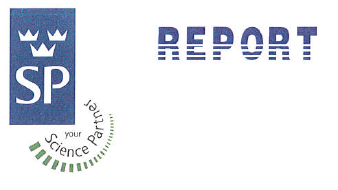
Date: 2016-11-22
Reference: 3P07507
Comparative testing of protection products for Car Paint and Marine Gelcoat
Summary
A comparison of 15 different chemical sealants for surface protection. 3 separate tests were performed. The tests conducted were:
- Measuring of contact angle and abrasion with cleansing products – report 3P07507
- Chemical wear resistance – report 3907507-1
- UV-blocking properties – report 3P07507-2
13 products were tested on painted steel panels, and 2 products were tested on gelcoated fiberglass panels. The abrasion with car/marine cleansing products and subsequent contact angle measurements, distinguishes itself to 3 products; Mr CAP FormulaU™ Car Paint Protection and Mr CAP FormulaU™ Marine Gelcoat Protection applied on both painted steel panels and fiberglass panels with a result of 14 washing cycles, and PPS Paint Sealant that had a durability of 9 washing cycles. All other products reached a durability between 1 and 3 washing cycles.
A washing cycle consists of 20 back and forth movements in abrasion tester. This corresponds to 13 standard manual car washes.
The chemical wear resistance was tested with two harsh chemicals, sulphuric acid (H2SO4) and sodium hydroxide (NaOH) and was afterwards ocularly examined, pertaining to gloss and colour change. All the products managed sulphuric acid without any negative impact. However, the test with NaOH showed 7 products with no negative impact, 5 products with moderate loss in gloss, and no change in colour and 3 products with distinct loss in gloss and colour change.
The UV-blocking properties are not providing major differences between the tested products. There are none or very little UV-blocking additive in all the tested products.
Introduction
There are a vast number of waxes and other type of car/marine surface protection products on the market intended for car paints and gelcoated fiberglass. Some products are available for the professional industry only, while others are retail grade products. Applied on the paint/fiberglass, the manufacturers of those products claim that the products generate a long-term durable protective, glossy and easy-to-clean surface. The durability is stated in marketing material and/or on the product package in terms of years. However, the durability of the products varies and is affected by the product content and external wear such as cleansing products, wash sponges and similar cleaning accessories. It is therefore accurate to measure the durability in terms of washing cycles in order to be able to quantify the durability in terms of time. 15 internationally well-known products were tested in a simulated manual car wash cycle in combination with contact angle measurements between each washing cycle in order to determine the durability of each product. Contact angle measurements were utilized to determine how many washing cycles each product was able to withstand. This procedure was repeated until there was no protective product left on the car paint or the gelcoat panel.
At that point the contact angle value had returned to the reference contact angle value. The number of washing cycles for each product that could be performed before the contact angle value had returned to the reference contact angle value determined the durability of the product. Each washing cycle exposed the tested product to both chemical, and mechanical wear. Three different kinds of cleansing products that are commonly used in car/marine cleaning applications were used in the test as chemical wear: a solvent-based degreaser, an alkaline degreaser and an anionic shampoo, were used as chemical wear. The mechanical wear from the wash sponge was simulated using BYK-Gardner Abrasion tester with a wash sponge as an abrasive material. The products were applied on the panels in accordance with each manufacturer’s instructions. The cleansing products used in the test were well-known products from major professional and retail brands on the market.
Car painted steel test panels and gelcoated fiberglass test panels without any applied product were in parallel used as reference panels.
| Product ID | Product (Brand/name) | Country |
| 101 | Ceramic Pro 9H Permanent Coating | HKG |
| 121 | Ditec Car Preservation System | Unknown |
| 111 | Jewelultra Diamondbrite | GBR |
| 31 | Lahega Toughguard | SWE |
| 131 | Meguairs Deep Crystal Coating | USA |
| 21 | Meguiars Ultimate Liquid Wax | USA |
| 11 | Mr CAP FormulaU™ Car Paint Protection | SWE |
| GCI2 | Mr CAP FormulaU™ Marine Gelcoat Protection | SWE |
| 41 | PPS Paint Sealant | CAN |
| 61 | ProTech Long Lasting Protection | MCO |
| 81 | Simoniz Original Wax | USA |
| 91 | Sonax Premium Class Nano Paint Coating | GER |
| 51 | Swissvax Concorso | CHE |
| GC21 | TC Nano Marine Gelcoat & Sealing | DNK |
| 71 | Ziebart Diamond Gloss | USA |
Preparation
Car painted steel test panels
Cold rolled steel (SS1142-32) was used to produce 55 pieces of panels with a thickness of 1.5 mm with the dimensions of 100×300 mm. The relative thickness was chosen in order to archive rigid test panels. The pieces were cleaned with 2-propanol (IPA) on both sides in order to remove any oily residues from previous handling. All pieces were painted on one side in an accredited car paint shop in accordance with industrial standards using Glasurit car paint with colour code VWLP3G Flashrot. These test panels were made to represent a modern car paint.
All car painted steel test panels were then prepared with an orbital polisher with 3M 80346 polishing compound with the aim to make the surface as even and smooth as possible. Thereafter the panels were degreased with both a solvent-based degreaser and an emulsion degreaser rinsed with water and finally washed with an anionic shampoo in order to remove the 3M polishing compound. The panels were then sprayed with IPA and dried with compressed air in order to remove any contaminants from the rinsing water. The test panels were carefully wrapped in bubble wrap, packed in boxes and stored until the actual test started.
Gelcoat test panels
Gelcoat test panels were prepared in the same dimensions as the car painted steel test panels. The panels were made in a plastic mould with approximate dimensions of 1000×900 mm. A mould release wax was applied to the mould before applying the gelcoat. The gelcoat used was Reichhold NORPOL SVG Gelcoat in colour code RAL3020. When the gelcoat was hardened a composite prepared from a powder bound fiberglass mat with a density of 450 g per was bound in a matrix of Polylite 440-M850. The composite was applied in three layers in order to achieve rigid test panels, i.e. 100×300 mm. These test panels were made to represent a fiberglass boat’s outer gelcoat layer.
All gelcoat test panels were then prepared with an orbital polisher with 3M 80346 polishing compound in aim to make the surface as even and smooth as possible. After preparation, the panels were degreased with both solvent-based degreaser and an emulsion degreaser. Thereafter rinsed with water and then washed with an anionic shampoo in order to remove the 3M polishing compound. The panels were then sprayed with IPA and dried with compressed air in order to remove any contaminants from the rinsing water. The test panels were carefully wrapped in bubble wrap, packed in boxes and stored until the actual test started.
Washing Cycle

A washing cycle was defined in the following way:
- A solvent-based degreaser was applied to the surface for five minutes. After five minutes the surface was thoroughly rinsed with deionized water.
- An alkaline degreaser was applied to the surface for five minutes. After five minutes the surface was thoroughly rinsed with deionized water.
- 20 cycles (1 cycle consists of 1 back and forth movement) of abrasion performed in a BYK-Gardner Abrasion tester, model A standard auto aftermarket wash sponge was used as abrasive material during abrasion. The sponge was continuously soaked with the car shampoo by a pump in order to prevent the surface from becoming dry during the abrasion.
Conclusions
12 of the 15 products have a durability between 1.2-2.6 washing cycles, which is well below the average of 4.1 washing cycles for the products tested on car painted steel test panels. 2 products were tested on gelcoated fiberglass test panels. The results varies greatly between these 2 products with TC Nano having a durability of approximately 1.5 washing cycles and Mr CAP FormulaU™ Marine Gelcoat Protection showing a durability at least 14 washing cycles. At least because the test was terminated after 14 washing cycles and the product was still active on the surface after 14 washing cycles.
The highest measured CA-value was achieved by the traditional hardwax product Simoniz Original Wax. However, the durability was well below average.
From the summary diagram 3 products stand out in the test in terms of durability. These are Mr CAP FormulaU™ Car Paint Protection, Mr CAP FormulaU™ Marine Gelcoat Protection and PPS Paint Sealant. However, the result varies between these three as well. PPS has durability of nearly 9 washing cycles and Mr CAP FormulaU™ Car Paint Protection and Mr CAP FormulaU™ Marine Gelcoat Protection have a durability of at least 14 washing cycles. The test was terminated after 14 washing cycles, and those two products were still active on the surface after 14 washing cycles.
SP Technical Research Institute of Sweden
SP Chemistry, Materials and Surfaces – Material and Surface Technology
Gallery – products included in SP-report
